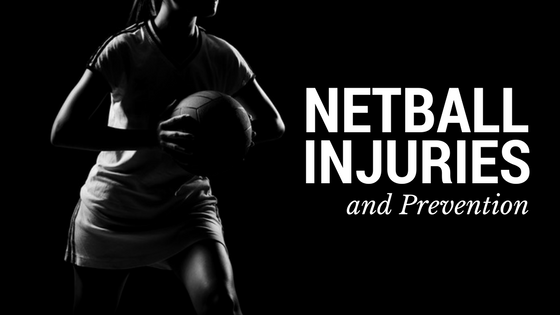
Netball is one of the most popular team sports in Australia. Its quick-firing action and heated competition make it a blast to play and watch – but also put the athletes at risk of injury.
In fact, Netball injuries represent 7% of adult and 4% of child sports related injuries admitted to Australian emergency rooms.This is one sport where injury prevention and proper recovery play a massive role in an athlete’s chances of staying fit and healthy.
We see a lot of netball injuries come through our doors, and we want to try and make sure you know what to watch out for. The following rundown will take you through some of the common injuries to watch out for, and how to avoid and/or prevent them from happening to you.
Hand and Finger Injuries
Every shooter knows the terrible feeling of a bullet pass jamming into their fingertips. A defender will never forget that attempted intercept that caused the same result. And centre court players have probably suffered both.
Common Injuries
- Fractures
- Dislocations
- Sprains
- Overuse injuries
Prevention
- Proper catching technique. Some basic tips include keeping your head up and watching the ball all the way to your hands, receiving the ball with an open palm, and cushioning the catch with your whole arm and shoulder. Netball training should include drilling on catching technique, to minimise the risk of finger jams and injuries.
- RICE (rest, ice, compression, elevation). If you have been injured, don’t play on! Rest and recover, and consider seeking advice from a physiotherapist.
Knee Injuries
The most common injuries in netball are to the ankles, knees and hands. But of all netball injuries, Knee injuries are usually the most severe and costly.
Common Injuries
- ACL Injury (represents 25% of Netball knee injuries)
- Jumper’s Knee (patellar tendonitis)
- Meniscal injuries
Prevention
- Warm Up. Perform dynamic warm ups before competition and training.
- Work on your form and technique. 80% of ACL injuries sustained in netball are indirect, meaning they are not caused by contact with another player. Most happen when a player pivots or lands incorrectly from a jump. So do what you can to keep up strength and flexibility in your knees, and land properly.
- The KNEE program. There’s an entire program dedicated to preventing knee injuries in netball. It’s foremost goal is to enhance movement efficiency, and work on strength, balance and agility.
Ankle Injuries
The same twists and turns that take a toll on Netballer’s knees can make trouble further down at the ankle. Sprains are by far the most common injury here, and they can be avoided by some of the same technique and agility training that’s good for the knees.
Common Injuries
- Ankle Sprains
Prevention
- Warm up.
- Technique and form. Many ankle injuries have the same root causes as knee injuries: improper form that causes extreme stress when jumping, pivoting, or suddenly starting and stopping.
- Training. Training should incorporate specific netball exercises focussed on balance, landing control, and change of direction.
If You Have Been Injured
Don’t try to ‘pop’ your dislocated finger back in. Don’t keep playing on a knee that’s been niggling for a week. Don’t toughen up and play that upcoming final game on a tender ankle. And watch for other pain too – shoulder bursitis, for example, is a common injury. If you’ve been injured, seek a physiotherapist who will properly identify your injury, and help you recover fully and properly.
Seek a Physiotherapist
A good Physio will give you a full evaluation, taking into account all the factors that caused or may have influenced your injury. They’ll also guide you to a full recovery, and teach you how stay healthy and avoid re-injury in the future.
Need a Physio in Perth? Contact Us
As mentioned at the article’s outset, we see and treat many Netball injuries here at Morley Physiotherapy Centre. Our diagnoses and treatments are specialised for every patient to ensure recovery, prevent re-injury, and even keep you in sporting shape whilst you’re injured.
Visit us at morleyphysio.com.au to get advice or schedule an evaluation.
Give us a call at 9375 3900, visit our contact us page, or email us directly at admin@morleyphysio.com.au.
